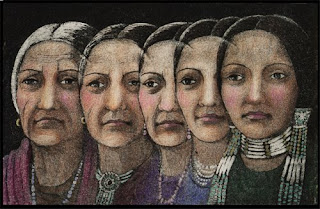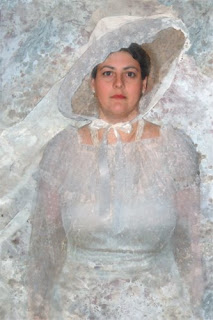 Changing Woman. Hand Colored Etching. Approx 6x10."
Changing Woman. Hand Colored Etching. Approx 6x10."This etching was one of the Women's Heritage series. Changing Woman is a Native American Deity who, like the earth and the moon, become old and then young again. Humanity also, ages, but in so many ways is able to experience a return to youth. She holds a universal symbolism.
The Women's Heritage Series contains references from women's myths, history and spirituality. Often there are Earth - centered themes included. The images are presented in overlapping scenes and people and include many symbols from various multicultural Sources of Women's Origins. Although the etchings are not available, limited edition giclee prints are, printed on heavy archival paper with colorfast inks.
Surround yourself with symbols from your source.
Images and writing are the exclusive property of Ruth Zachary.
The Women's Heritage Series contains references from women's myths, history and spirituality. Often there are Earth - centered themes included. The images are presented in overlapping scenes and people and include many symbols from various multicultural Sources of Women's Origins. Although the etchings are not available, limited edition giclee prints are, printed on heavy archival paper with colorfast inks.
Surround yourself with symbols from your source.
Images and writing are the exclusive property of Ruth Zachary.










